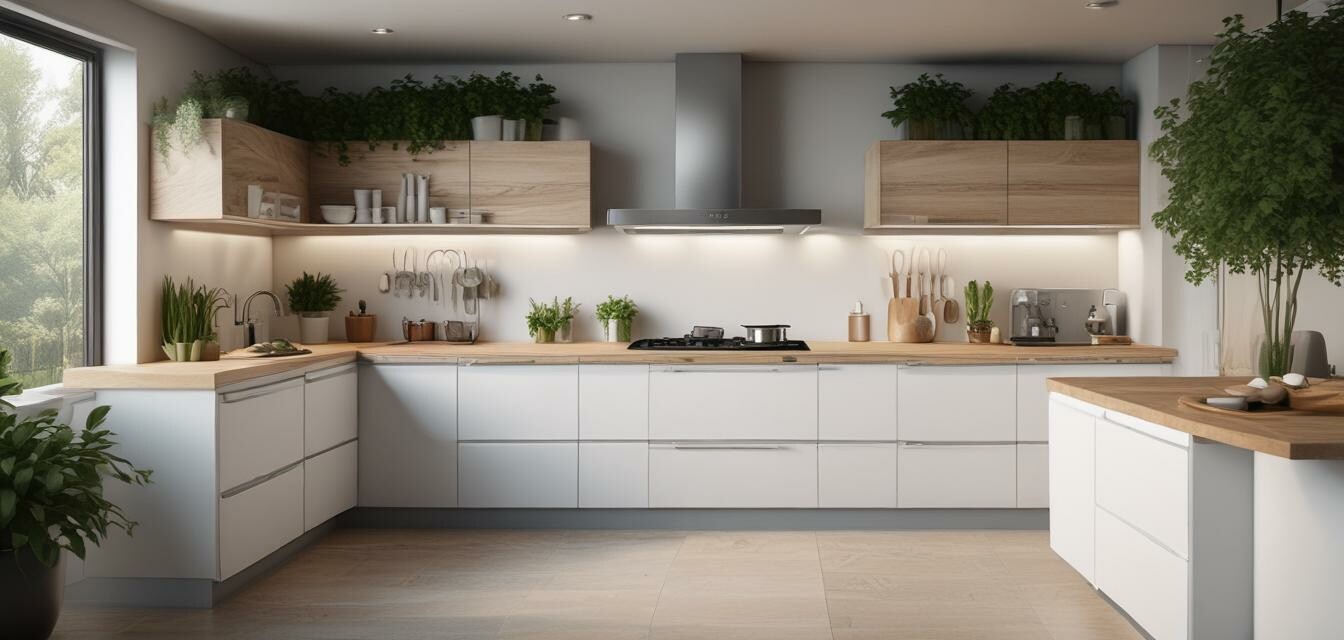
The Future of Sustainable Kitchen Appliances
Key Takeaways
- The trend towards sustainable kitchen appliances is rapidly growing.
- Technological innovations are making eco-friendly cooking easier and more convenient.
- Looking ahead, 2025 will see a greater emphasis on energy efficiency and smart features.
- Consumers should focus on the material used and energy consumption of kitchen appliances.
- Understanding new technologies helps in making informed decisions for sustainable living.
As we step into a new era in 2025, the kitchen is evolving beyond just a place to cook. It’s becoming a hub for sustainability and innovation. In this article, we'll explore emerging technologies in sustainable kitchen appliances that promote eco-friendliness while enhancing cooking convenience.
Understanding sustainable kitchen appliances
Sustainable kitchen appliances are designed with the environment in mind. This means they use less energy, produce fewer emissions, and are made from environmentally friendly materials. Let's examine why these appliances are crucial for both consumers and the planet.
Why are they important?
- Reduce energy consumption.
- Minimize waste and pollution.
- Utilize renewable resources.
- Enhance overall kitchen efficiency.
Emerging technologies in sustainable kitchen appliances
As we move towards 2025, a host of innovative technologies are reshaping the landscape of kitchen appliances. Here are some of the most promising advancements:
| Technology | Description | Benefits |
|---|---|---|
| Smart energy monitoring | Appliances that track energy consumption in real-time. | Helps users adjust habits to save energy. |
| Solar-powered appliances | Kitchen tools that can harness solar power. | Reduces reliance on traditional electricity sources. |
| Biodegradable materials | Kitchen products made from renewable resources that decompose naturally. | Less pollution and waste in landfills. |
| Induction cooking technology | Appliances that use electromagnetic energy to heat pots and pans directly. | More energy-efficient cooking method. |
| Water-saving faucets | Faucets that limit water flow without sacrificing performance. | Significant reductions in water usage. |
Role of smart technology
Smart technology is transforming how we interact with kitchen appliances. With the rise of smart home systems, many appliances are now equipped with features that allow users to control them via smartphones or smart speakers. This not only enhances convenience but also fosters eco-friendly cooking practices.
- Ability to monitor energy usage remotely.
- Automated settings for energy-saving modes.
- Integration with other smart home devices for coordinated energy management.
Consumer trends in sustainable appliance choices
As consumers become more environmentally conscious, their preferences are shifting towards sustainable options. Not only do these consumers look for energy-efficient models, but they are also concerned about the materials used and the lifecycle of their appliances.
What do consumers consider?
- Energy ratings and certifications.
- Durability and material sustainability.
- Recycling and disposal options.
- Innovative features that promote ease of use.
With awareness increasing, significant market research indicates that consumers are willing to pay a premium for eco-friendly appliances that do not compromise on performance. For more insights, check out our buying guides to help you navigate these choices.
Challenges in adopting sustainable appliances
Despite the promising advancements, some challenges remain in the widespread adoption of sustainable kitchen appliances:
- Higher upfront costs.
- Limited availability in certain areas.
- Consumer knowledge gaps regarding features and benefits.
Addressing these challenges will require collaboration between manufacturers, retailers, and consumers to ensure a smoother transition to sustainable technology. With education and awareness, consumers can overcome these hurdles.
Future impact on the kitchen industry
The trend toward sustainable kitchen appliances is expected to continue growing. As technology advances, we can anticipate a shift that will dominate new product offerings by manufacturers. By 2025, the kitchen appliance market will likely reflect:
- Increased energy efficiency standards.
- Broader adoption of smart home technologies.
- Greater focus on sustainable materials and production processes.
- Enhanced consumer demand for transparent sourcing and manufacturing practices.
The role of manufacturers
Manufacturers will need to innovate continuously to meet consumer demand for sustainable options. Long-term development strategies focusing on renewable materials and energy-efficient designs can significantly change the industry landscape.
Conclusion
As we look towards 2025, the future of sustainable kitchen appliances is bright. With the integration of innovative technologies and an increasing consumer focus on eco-friendliness, the kitchen is set to become a cornerstone of sustainable living. Understanding these trends and the technologies behind them will not only help consumers make better choices but also contribute positively to the environment.
Tips for choosing sustainable kitchen appliances
- Research energy ratings: Look for appliances with high energy efficiency ratings.
- Prioritize durable materials: Choose products that are built to last.
- Think long-term: Invest in appliances that offer both sustainability and advanced features.
- Stay informed: Keep an eye on market trends and new releases to make educated decisions.
Pros
- Reduced energy bills.
- Lower environmental impact.
- Enhanced cooking convenience.
- Improved aesthetics in the kitchen.
Cons
- Higher initial investment.
- Potential compatibility issues with older homes.
- Learning curve for new technologies.
For those interested in staying updated with the latest news and trends in high-tech kitchen appliances, be sure to visit our News and Trends section for ongoing updates.